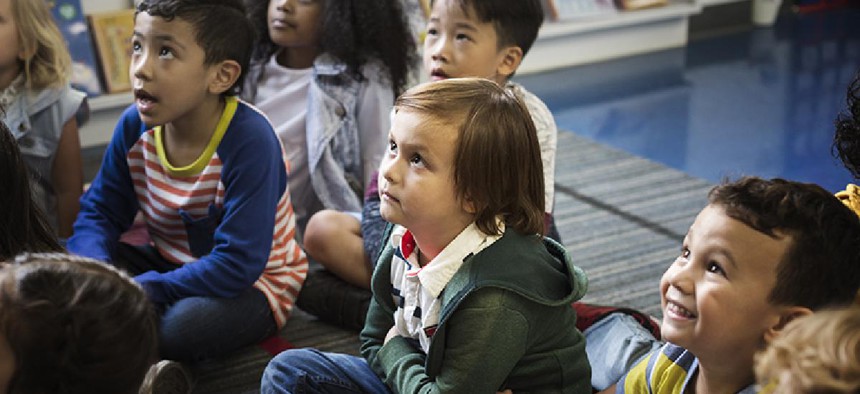New York City’s long-awaited plan for school diversity was released Tuesday morning, with surprisingly little fanfare. While some observers hailed aspects of the plan as a major step forward, others questioned the city’s relatively modest approach to the massive problem of school segregation.
Responding to a push from advocates, the city announced a policy statement prioritizing “diverse and inclusive” schools, and establishing explicit integration goals.
In an emailed statement, City Councilmen Ritchie Torres and Brad Lander called the setting of those goals “a bona-fide breakthrough.”
“We are not aware of any other big city that has voluntarily set such goals,” the statement said.
But other integration supporters question whether the plan goes far enough. For example, Matt Gonzales, who leads school integration efforts for the nonprofit Appleseed, described the city’s changes to high school admissions as “tinkering” around the edges.
“I don’t see that as leading towards some larger change,” he said.
RELATED: Mayoral control tops post-budget education agenda
The 13-page document makes no mention of “integration” or “segregation,” opting instead to define the city’s goal as supporting “diversity,” which includes students who have disabilities, are learning English or live in temporary housing.
“We are sorry to see that the plan does not use the words ‘segregation’ and ‘integration,’” Torres and Lander wrote in their statement. “We will not break the cycle of segregation if we cannot even name it.”
Here are some the highlights from the plan:
Includes a policy statement. City council members have been asking the city to declare its commitment to integrated schools since at least 2015. Here’s the statement:
“The New York City Department of Education is committed to supporting learning environments that reflect the diversity of New York City. We believe all students benefit from diverse and inclusive schools and classrooms where all students, families and school staff are supported and welcomed. This work is essential to our vision of Equity and Excellence for all NYC students.”
Eliminates the “limited unscreened” admissions method for high schools. Chalkbeat has written extensively about how the high school application process favors families with the time and savvy to navigate an opaque process. This change, which will impact students starting high school in fall 2019, requires schools to stop giving admissions preference to students who attend open houses or high school fairs.
Sets measurable goals, as requested by advocates in a letter sent to Chancellor Carmen Fariña late last month. The city’s goals are to increase the number of students in racially representative schools by 50,000 over the next five years (there are more than 1 million students enrolled in city schools), while decreasing the number of “economically stratified” schools by 10 percent over the next five years. The city also aims to increase the number of “inclusive” schools that serve students who are learning English and students who have disabilities.
The city defines “racially representative” schools as those where black and Hispanic students make up at least 50 percent but no more than 90 percent of the population. Currently, black and Hispanic students make up about 70 percent of the student body citywide and only 31 percent of schools meet the city’s definition of being racially representative, according to the education department.
RELATED: Should New York's kids be afraid of Betsy DeVos?
Creates a School Diversity Advisory Group. The body, which will include diversity experts, parents and students, will evaluate the city’s current goals and come up with formal recommendations by June 2018.
Expands on the city’s efforts to get more black and Hispanic students into specialized high schools by offering the entrance exam on a school day. The city is also boosting test prep and a program for kids who just missed the cut-off on the specialized high school exam, but none of these efforts have been shown to significantly change the makeup of students offered seats at the elite schools.
Expands the “Diversity in Admissions” initiative to private pre-K providers. The Diversity in Admissions program allows schools to set aside a percentage of seats for students who are poor or meet other criteria. Community organizations account for 60 percent of pre-K providers.
Establishes a “community stakeholder engagement process” in districts where school integration work is already underway. District 1 on the Lower East Side and District 13 in Brooklyn have been working on district-wide integration plans with the help of a state grant, though some parents feel the city education department has interfered with that process.
In Brooklyn’s District 15, parents have called for a public process to come up with changes to the middle school application process. Similar work is being led by parents in District 3, which includes the Upper West Side and part of Harlem, as well as District 2, which includes much of Lower Manhattan, Chinatown and the Upper East Side.
Originally posted on Chalkbeat by Christina Veiga on June 6, 2017. Chalkbeat is a nonprofit news site covering educational change in public schools.


